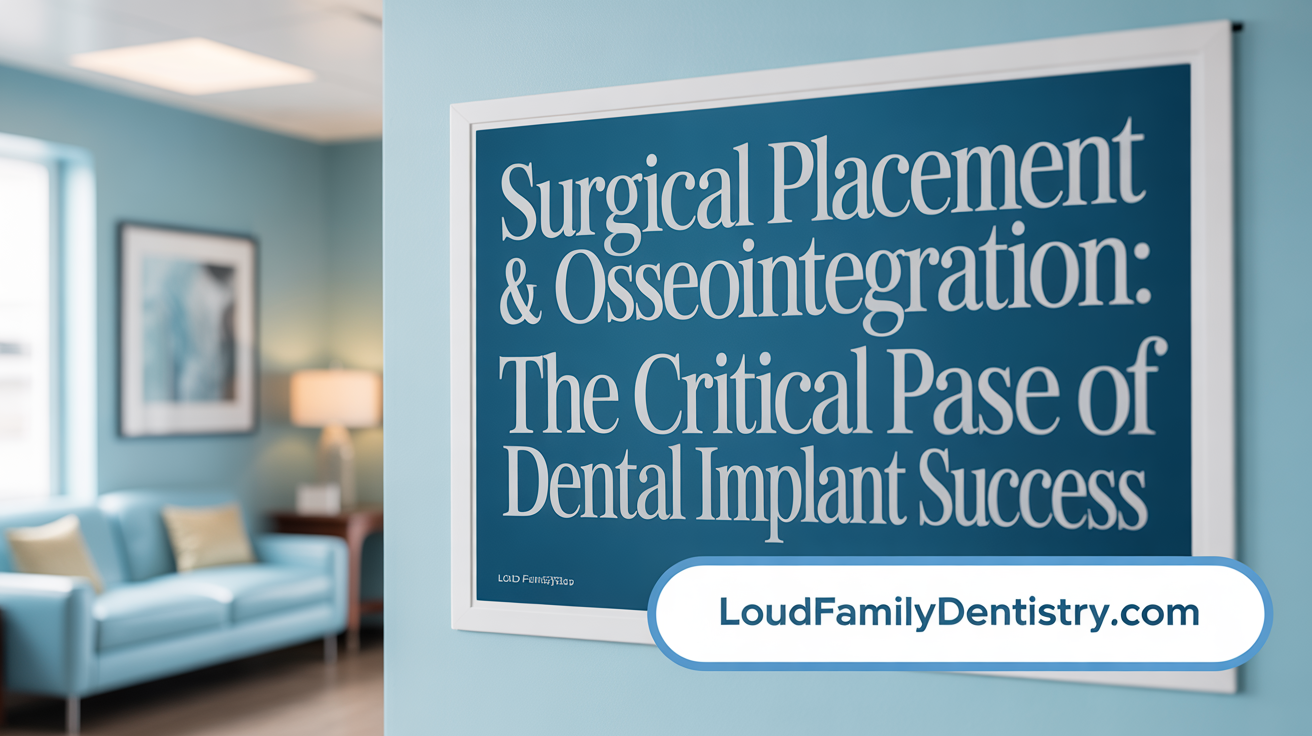Understanding Dental Implants: Your Path to a Lasting Smile
Dental implants are a transformative solution for replacing missing teeth, offering both functional and aesthetic benefits. This guide breaks down the entire process, from the initial consultation to post-surgery care, helping you understand each stage and what to expect on your journey to renewed dental health.
Initial Evaluation and Treatment Planning

What does the consultation process involve?
The journey toward dental implants begins with an initial consultation. During this phase, the dentist conducts a thorough examination of the patient's oral health, including checking for any signs of gum disease or existing dental issues. They review medical and dental histories to identify any conditions that might influence the procedure or healing. Imaging tests such as X-rays or advanced 3D scans like CT scans are performed to assess the jawbone's structure and density.
How is patient assessment conducted?
The assessment includes examining the alignment of existing teeth, the condition of the gums, and the amount of available jawbone. This step helps determine whether the patient is a suitable candidate for implants or if preparatory procedures, such as bone grafting, are needed. Dentists also evaluate overall health considerations, including lifestyles, habits like smoking, and any medical conditions that could affect healing.
Which imaging techniques are used?
X-rays provide initial insights into jawbone health and spacing. For a more detailed evaluation, CT scans or Cone Beam CT imaging are used because they produce three-dimensional images. These images assist in precise planning, allowing the dentist to determine the exact location and angle for implant placement, ensuring optimal support and avoiding vital structures like nerves and sinuses.
How is candidate suitability assessed?
Ideal candidates typically have enough healthy jawbone to support the implant. If bone loss is present, bone grafting might be necessary, which could extend the overall treatment timeline. Candidates should have good oral hygiene practices and are generally committed to maintaining their oral health.
How is the treatment plan developed?
Based on assessment results, the dentist creates an individualized treatment plan. This plan details the number and type of implants needed, the placement process, and any additional treatments like bone grafts or sinus lifts. The plan also includes scheduling for each phase, from extraction to final crown placement, and discusses options for temporary restorations during healing.
Why is evaluation of bone health important?
Healthy, dense jawbone is critical for implant stability. Insufficient bone may compromise the success of the procedure, leading to the need for bone augmentation. Proper evaluation ensures that the implants will integrate securely with the bone, providing long-term success.
What are the different types of dental implants?
The primary types include endosteal, subperiosteal, and zygomatic implants. Endosteal implants are the most common, implanted directly into the jawbone to support various dental restorations. Subperiosteal implants sit on top of the jawbone under the gum tissue and are used when there is insufficient bone height. Zygomatic implants are longer screws anchored in the cheekbone, often used in cases of severe upper jaw bone loss where traditional implants are not feasible.
| Implant Type | Main Location | Best For | Additional Details |
|---|---|---|---|
| Endosteal | Inside the jawbone | Most patients needing single, multiple, or full-arch restorations | The most common type, screw-shaped, supporting crowns or bridges |
| Subperiosteal | On or above the jawbone | Patients with insufficient jawbone and unable to undergo grafting | sits on top of the bone under gums, suited for specific cases |
| Zygomatic | Cheekbone (zygomatic arch) | Severe upper jaw bone loss, cases where traditional implants are unsuitable | Longer implants anchored in the cheekbone |
This comprehensive evaluation process ensures that each patient receives a customized, effective treatment plan, setting the foundation for successful dental restoration.
Preparatory Procedures: Tooth Extraction and Bone Grafting

Tooth extraction
The dental implant process often begins with extracting any remaining damaged or decayed teeth. This step is crucial because a healthy foundation is necessary for implant success. After extraction, the site needs time to heal, which allows the gum tissue and bone to recover before further procedures.
Healing after extraction
Healing from tooth extraction varies but generally takes several weeks to a few months. During this period, the area gradually closes and stabilizes, preparing for the next phase—whether that involves implant placement or additional treatments. Patients are usually advised to follow a soft diet and maintain good oral hygiene to promote proper healing.
Bone grafting: necessity and process
Sometimes, the jawbone may lack sufficient density or volume to support an implant. In such cases, bone grafting becomes necessary. This procedure involves transplanting bone tissue from another site in the body or using synthetic materials to augment the bone. The graft provides a sturdy base and helps ensure the long-term stability of the implant.
Impact on treatment timeline
Undergoing bone grafting adds time to the overall treatment plan. Healing after grafting can take between 6 to 12 months, depending on the complexity and the materials used. This extended period is essential for the graft to integrate with the existing bone, creating a solid foundation for the implant.
Timeline overview
| Procedure | Average Duration | Additional Notes |
|---|---|---|
| Tooth extraction | Several days to weeks | Initial step; ensures healthy bone for implants |
| Healing after extraction | Several weeks to months | Prepares site for further procedures |
| Bone grafting | 6 to 12 months | Necessary if existing bone is insufficient |
| Implant placement | Followed by 3-6 months of osseointegration | Final phase before attaching the crown |
Understanding these preparatory steps helps patients grasp the importance of patience and proper healing in achieving successful dental implant outcomes.
Surgical Implant Placement and Osseointegration

What are the step-by-step procedures involved in dental implant placement?
The process begins with a comprehensive initial consultation, during which the dentist evaluates the patient's oral health and jawbone condition. This involves imaging tests like X-rays or 3D scans to determine if there is enough bone to support the implant. If bone loss has occurred, bone grafting may be necessary, either before or during the implant procedure.
Once eligibility is confirmed, the surgical phase commences. The first step in surgery involves administering local anesthesia to numb the area. A small incision is made in the gum tissue to expose the underlying jawbone. If a surgical guide is used, it ensures precise placement of the implant, aligning it correctly in the bone.
Following the incision, the dentist drills a precise hole into the jawbone using specialized instruments. This guides the placement of the titanium screw, which acts as the artificial root for the replacement tooth. The titanium implant is then carefully screwed into this prepared site, ensuring stability.
After placement, the gum tissue is stitched to cover the implant, facilitating proper healing. This initial surgery marks the beginning of the osseointegration process.
The healing period typically lasts between three to six months. During this time, the bone grows around the implant, fusing tightly with it—a process known as osseointegration. This fusion provides a firm foundation for the final restoration.
During healing, some patients may receive temporary restorations, such as removable dentures or bridges, to restore function temporarily and maintain aesthetics.
Once osseointegration is complete, a minor second surgery may be performed to attach a healing cap or abutment. This component shapes the gum tissue and prepares the site for the final crown.
The last phase involves taking impressions to create a custom-made crown, which is then attached to the abutment, completing the dental implant process. The entire procedure from initial consultation to final restoration can span several months, emphasizing the importance of patience and meticulous care throughout.
Abutment Placement and Final Restoration

What is the role of the abutment, and how is it placed?
The abutment acts as a connector between the dental implant and the final restoration, such as a crown. After the implant has successfully fused with the jawbone, a minor surgical procedure is performed to expose the implant or place a healing cap. The abutment is then attached to the implant, which may involve opening the gum tissue and screwing it onto the implant.
How does healing proceed after abutment installation?
Once the abutment is in place, a healing period of about two weeks is necessary for the gum tissue around it to heal properly. During this time, patients should maintain good oral hygiene and avoid hard or sticky foods to support healthy healing. This phase prepares the site for the final restoration.
How are crowns and prostheses fabricated?
Impressions are taken after the gum tissue has healed around the abutment. These models are sent to a dental laboratory where custom crowns, bridges, or dentures are fabricated to match the natural teeth in color, shape, and size. This process typically takes around three to four weeks.
What is the process of attaching the final crown or denture?
Once the prosthetic is ready, the dentist removes any temporary coverings and unscrews or cements the final crown onto the abutment. Careful adjustments are made to ensure proper fit, bite, and appearance. This final step restores the full functionality and natural look of the teeth, completing the implant process.
Full Mouth Dental Implants and the All-on-4 Technique
What are the steps involved in a full mouth dental implant procedure?
The process for full mouth dental implants, including the popular All-on-4 technique, begins with a detailed consultation. During this phase, the dentist conducts a thorough oral exam, reviews medical and dental histories, and typically uses X-rays or 3D imaging to evaluate the jawbone's health and density.
Once a treatment plan is confirmed, the next step involves preparing the mouth. If necessary, remaining damaged teeth are extracted, and bone grafts may be performed if the jawbone lacks sufficient density to support the implants. This step ensures a strong foundation for the implants.
The implant placement surgery follows, where multiple titanium screws are surgically inserted into the jawbone. In the All-on-4 procedure, four implants are strategically placed—usually with two straight anterior implants and two angled posterior implants—to maximize support and stability. The surgery typically takes a few hours and is performed under local anesthesia.
After surgery, a healing period called osseointegration begins. During this time, the bone fuses securely with the titanium implants over several months (usually 3 to 6), providing a sturdy base for the final restoration. Temporary dentures or bridges may be used during this healing phase to restore aesthetic appearance and function.
Once osseointegration is complete, abutments are attached to the implants. These connectors serve as anchors for the final prostheses. After a short healing period of approximately two weeks for gum tissue recovery, custom-made permanent prostheses—such as full-arch bridges—are fixed onto the implants.
The final restorations match the natural teeth in both function and appearance. Ongoing maintenance includes good oral hygiene practices, routine dental visits, and careful monitoring to ensure the longevity of the implants. Overall, the full mouth dental implant process, especially with All-on-4, offers a stable, long-lasting solution for replacing all teeth in one or both jaws.
Post-Surgical Care, Recovery, and Potential Risks

What are the common side effects and risks associated with tooth implants?
Common side effects after dental implant surgery include swelling, discomfort, bruising, minor bleeding, and inflammation around the implant site. These symptoms are usually temporary and manageable with prescribed medications or home care. However, there are possible risks involved, such as infection at the implant site, nerve or tissue damage, and sinus issues if the implant protrudes into the sinus cavity. Gum recession and peri-implantitis, which can cause bone loss around the implant, are other potential concerns. Risks like implant failure may occur if osseointegration does not proceed properly, often due to poor bone quality or improper placement. Rarely, body rejection of the titanium implant can happen. Factors such as poor oral health, smoking, uncontrolled systemic conditions like diabetes, and inadequate jawbone density tend to increase complication chances. Proper surgical technique, diligent oral hygiene, and following post-operative instructions are vital to reduce risks and support successful healing.
How can pain and swelling be managed after getting a dental implant?
Pain and swelling are common after surgery and can be effectively managed with over-the-counter pain relievers like ibuprofen or acetaminophen. Applying ice packs to the cheek near the treatment area during the first 24 to 48 hours can help reduce swelling and discomfort. Following the dentist’s instructions on medication use and diet helps facilitate recovery. Patients are advised to rest and avoid strenuous activity during initial days. Maintaining good oral hygiene with gentle brushing around the surgical site, and using prescribed antiseptic mouthwashes, can prevent infection and promote healing.
What are the best practices for oral hygiene and maintenance after an implant procedure?
Maintaining oral hygiene is crucial for the longevity of dental implants. Patients should brush at least twice a day with a soft-bristled toothbrush, floss daily, and consider using antimicrobial mouth rinses. Routine dental check-ups and professional cleanings help monitor implant health and catch any issues early. Avoiding harmful habits like smoking and using abrasive toothpaste also contributes to better results. If a temporary crown or healing cap is in place, special care should be taken to keep the area clean while avoiding excessive pressure.
What dietary recommendations should be followed during healing?
During the initial healing phase, a soft-food diet is recommended to avoid disturbing the surgical site. Foods like yogurt, mashed potatoes, smoothies, and cooked vegetables are ideal. Patients should avoid hot, spicy, crunchy, or chewy foods that could irritate or dislodge the healing tissues. Drinking plenty of water and avoiding alcohol or tobacco helps support recovery. After healing progresses, a gradual return to normal diet is encouraged, ensuring that the implant site remains free from undue pressure.
What are the long-term care and routine check-ups necessary for implant success?
Long-term care involves diligent oral hygiene practices, including brushing, flossing, and regular dental visits every six months. These visits allow the dentist to examine the implant and surrounding tissues, clean the area, and identify early signs of complications. Maintaining a balanced diet, avoiding smoking, and addressing any systemic health issues enhance the lifespan of dental implants. Proper maintenance can prevent peri-implantitis, bone loss, and other issues that might compromise implant stability and function.
Why might some individuals opt out of dental implant procedures?
Some individuals may choose not to undergo dental implants due to health considerations. Conditions like immune disorders, uncontrolled diabetes, active cancer, recent radiotherapy, or pregnancy can impair healing, increasing failure risk. Patients with poor oral hygiene, active periodontal disease, smoking habits, or bruxism might experience higher failure rates, leading them to consider alternative options like dentures or bridges. Age alone is not usually a contraindication, but insufficient jawbone density or bone quality could restrict implant success. Certain medications, such as bisphosphonates, SSRIs, or proton pump inhibitors, may also influence healing and implant success, leading some patients to avoid implants.
| Aspect | Recommendations | Notes |
|---|---|---|
| Side effects & risks | Swelling, pain, infection, nerve damage | Proper surgical technique reduces risks |
| Pain management | OTC meds, cold packs | Follow dentist’s advice |
| Oral hygiene | Brushing, flossing, check-ups | Essential for longevity |
| Diet during healing | Soft foods | Avoid harsh or chewy foods |
| Long-term care | Regular check-ups, hygiene | Maintains implant health |
| Reasons to avoid | Systemic health issues, poor oral hygiene, habits | Consult dentist for personalized advice |
Making Informed Decisions on Your Dental Implant Journey
Dental implants represent a significant investment in your oral health, requiring careful consideration and patience throughout the multi-phase process. Understanding every stage—from evaluation and surgery to recovery and maintenance—empowers you to make informed choices tailored to your needs. Whether opting for single tooth replacement or full-mouth restoration, partnering with experienced dental professionals and adhering to post-operative care ensures the best outcomes for long-lasting, natural-feeling results.
References
- The Dental Implant Process Timeline - TrailHead Advanced Dentistry
- Breaking Down the Dental Implant Process Timeline For You
- The All-on-4 Dental Procedure: Step-by-Step Process Explained
- Dental Implant Procedure: A Step by Step Guide
- The Step-by-Step Process of Getting a Dental Implant
- Guide to Dental Implants - WebMD
- Dental Implant Procedure Explained Step by Step
- Dental Implant Steps: What to Expect During Your Procedure
